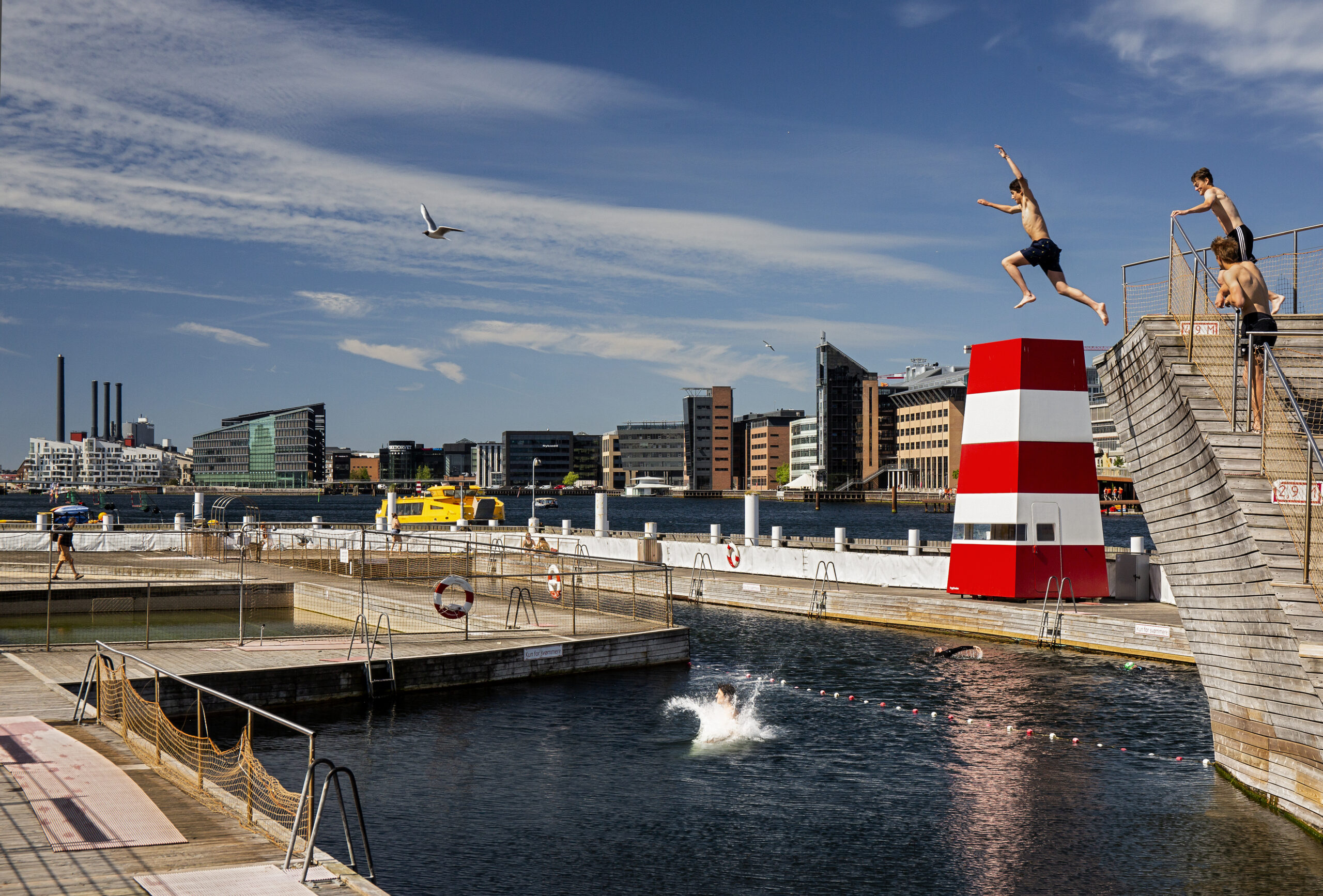Climate change adaptation in copenhagen
Drag the screen to explore the 360 view.
Video credits: State of Green
Perspective
Climate change adaptation
Flood prevention
Smart cities
+4


Drag the screen to explore the 360 view.
Video credits: State of Green
Cities around the world increasingly face the adverse effects of climate change, rising temperatures and sea levels, longer periods of drought and stronger storms.
Combining these phenomena with increasing urbanisation, and the fact that most cities have large areas of impermeable surfaces, the need to rethink urban development is clear.
An integrated approach to climate change adaptation, urban development and urban water management reduces the social, environmental and economic costs caused by climate change, and allows rainwater to be used as a resource.
Denmark is no stranger to ever-heavier, ever-frequent rainfalls and multiple Danish cities have planned and adopted integrated ways to climate change adaptation, building new green areas, creating liveable and climate resilient cities. One of them, is Copenhagen.
In July 2011, the heaviest rainfall known to date in Denmark arrived on a summer’s day in Copenhagen, resulting in almost citywide floods, as sewers were at capacity and the rainwater had nowhere to go, which resulted in damages of up to 1 billion EUR.
Post the 2011, flooding the city of Copenhagen developed a Cloudburst Management Plan. The plan designates seven water catchment areas in the city and has resulted in a catalogue of approxi-mately 300 public surface projects to be implemented across the city.
Prioritizing of the projects considers multiple factors such as hydraulic aspects in establishing the se-quence of projects, identifying flood risk areas, and if there is other construction work planned to enable synergies with urban development.
On this tour you can explore several such projects, including Copenhagen’s first climate resilient neigh-bourhood and the swimming facilities in the Copenhagen Harbour area. The solutions implemented throughout the city are characterised by innovation, multipurpose usage, sustainability, and liveability.
Take for instance Tåsinge Square, a green pocket park with lowered basins that can handle three different types of rainwater fractions. The square is now an urban habitat with a rainforest area, flowers, wild herbs, slopes facing the sun and a café area. It is a prime example an area that solved the problem of managing large amounts of rainwater, as well as creating a recreational urban oasis.
In conclusion, the solutions in Copenhagen tell the story of how Denmark’s integrated approach to climate change adaptation, urban development, and urban water management, has led to greener, more liveable cities.
Perspective
Urban planning and development
+1